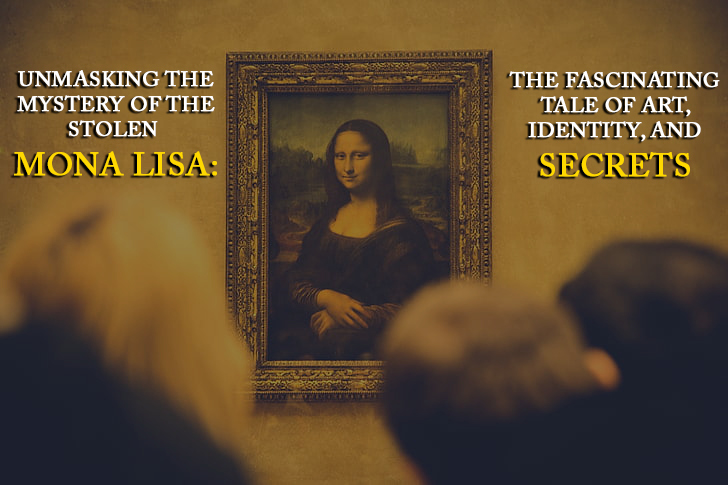Unmasking the Mystery of the Stolen Mona Lisa: The Fascinating Tale of Art, Identity, and Secrets

A story that uncovers the stolen masterpiece, the woman behind the smile, and the birth of a global icon.
On the fateful Monday morning of August 21, 1911, Paris woke to its usual hustle and bustle, but little did the world know that the day would mark the disappearance of the most famous painting in history. Three men emerged from the Louvre Museum, carrying an enigmatic masterpiece under their blanket. That masterpiece was none other than Leonardo da Vinci's Mona Lisa, the world's most renowned painting, valued today at close to $1 billion.
But who was the mysterious woman in the painting? For centuries, her identity remained a puzzle, with theories ranging from da Vinci's mother to a queen of Italian aristocracy. Giorgio Vasari's 1550 autobiography of da Vinci suggested she was Lisa Gherardini, wife of silk trader Francesco Giocondo, the origin of her names—Mona Lisa, derived from Madonna Lisa (Madam Lisa), and La Gioconda (the joyful one).
However, skepticism persisted until recently, when exhaustive research in Florence archives unveiled the truth. Historical documents confirmed that Lisa Gherardini was the woman behind the enigmatic smile. She was married to Francesco Giocondo, and their relationship with da Vinci's family suggested that da Vinci's father might have commissioned the painting.
Why is the Mona Lisa so extraordinary? Crafted on poplar wood and measuring a mere 77cm x 53cm, da Vinci's masterpiece was ahead of its time as the first closely focused half-length portrait. Da Vinci's Sfumato technique, characterized by the blending of colors and absence of distinct outlines, added depth and mystery to the painting. The real secret behind her smile lay in the techniques used to make her smile more apparent when not directly focused upon.
Da Vinci's exploration of optical phenomena was another fascinating aspect. His understanding of how light rays scatter over the retina allowed him to capture the finest details with the Fovea, while using peripheral vision to create the Mona Lisa's elusive smile. It's no wonder he spent so much time dissecting facial muscles and nerves.
Intriguingly, there is evidence of another Mona Lisa, known as the Isleworth Mona Lisa, painted simultaneously. Whether this was an earlier version by da Vinci or a later copy is a topic of debate, as well as the theory of the background being completed by someone in da Vinci's workshop.
The Mona Lisa's journey to the Louvre Museum in Paris began when Leonardo da Vinci moved to France in 1516. After his death, the painting became part of the French Royal Collection. In 1797, during the French Revolution, it was moved to the Louvre. This remarkable work of art finally gained its global recognition following its theft in 1911 by Vincenzo Peruggia. Peruggia's theft catapulted the Mona Lisa to unprecedented fame, and the painting returned to the Louvre, forever enclosed behind bulletproof glass.
The Mona Lisa, a true enigma, embodies da Vinci's genius, art's intricacies, and the enduring allure of a smile that has captivated the world for centuries.
10 Month Ago
Robbers Loot Jewelry Shop in Mahottari; Traders Sh..
10 Month Ago
Trump and Putin to Discuss Ukraine on Tuesday
YOU MAY ALSO LIKE THIS
Top Free AI Websites in 2025 and Their Key Features
Artificial Intelligence continues to revolutionize how we work, create, and communicate, and 2025 offers an impressive array of fr..
1 Month Ago
2025 Global Entertainment Industry Sees Rising Streaming Subscriptions..
The global entertainment industry in 2025 continues to evolve rapidly with streaming platforms leading the way in reaching new aud..
2 Month Ago
Global Carbon Emissions Hit Record High in 2025 Despite Climate Effort..
In 2025, global carbon dioxide emissions from fossil fuels reached a record high, increasing by 1.1% compared to the previous year..
2 Month Ago

_1763308546.png)
 (1)_1763140461.png)
_1763140142.png)

